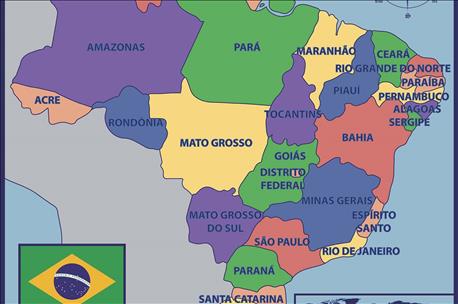
It was all the rage a few years back. With commodity prices peaking, a good number of U.S. farmers looked into buying ground in Brazil, and clearing new farms as their ancestors had done a couple of centuries back across the Midwest.
Brazilian land was cheap then, but it’s gotten much more expensive.
With growing world demand for feed rations, led by China’s voracious appetite, world soy and corn prices shot up dramatically. Alas, they’ve come down since then—but the floor upon which they’re sitting is now rising at a more sustainable rate.
The cost of Brazilian farmland

The average price range for renting good farm ground in Parana state, according to FNP, ranges from the equivalent of 10.7 to 21.4 bushels per acre. That range in Mato Grosso, Brazil’s top-producing soy state, is more like 5.3 to 12½ bushels per acre. (Photo: pablofdezr/Thinkstock)
And with world soybean prices based on the Chicago dollar value, plenty of Brazilian land buyers are seeing the value of parking their money in soybean production as the Brazilian real (currency) leaps and dives daily on the exchange rate trade desks.
Informa Economics FNP has just issued its Brazilian state-by-state average farmland price list, showing that although this past year was mildly negative to land prices, farms are going for ever more in the medium and long terms.
The Brazilian nationwide average farmland price—without buildings or other improvements—was just pegged at $2,530 per acre, versus just $627 ten years ago, factoring in the current and contemporary exchange rate.
Prices steady, terms extended
U.S. Midwest land prices shot up as well during that time. But for Brazil, that’s a whopping 300% jump.
At the same time, Brazil’s overall economy has shed value, falling into a serious recession with no light so far at the end of the tunnel. In light of this, according to reports, sellers have dug in, in terms of asking prices, but have eased payment terms quite a bit.
Almost nobody buys Brazilian farmland for cash, preferring to make payments of so many bushels per acre over an agreed-upon period of time. That time period has stretched in many cases from the usual five years to more like ten years—with sellers adding a few bushels per acre onto the price in return for the more generous terms.
Naturally, individual farmland prices in Brazil vary widely. A lot depends on how close a given farm is to a paved road, to processors and to ports. The national number is an average. But let’s take the top two Brazilian soybean-producing states, Mato Grosso and Parana. Parana, in the south, is an established agricultural region boasting good infrastructure and the second-largest soybean-exporting port in the country. In Mato Grosso, the newer soybean frontier with poor infrastructure, land prices are cheap. Discounts are high as the trading companies have to move soybeans on poor roads a long way to Amazon River ports or an even longer (though less terrifying) way to southern ports.
Renting
Even if you’re just renting, the average price range for good farm ground in Parana state, according to FNP, ranges from the equivalent of 10.7 to 21.4 bushels per acre. That range in Mato Grosso, Brazil’s top-producing soy state, is more like 5.3 to 12½ bushels per acre.
Meanwhile, there’s a push in the Brazilian congress to ease restrictions on foreigners holding Brazilian farmland, so you might just jump in soon—if you’re ready for a challenge!
The opinions of the author are not necessarily those of Farm Futures or Penton Agriculture.
About the Author(s)
You May Also Like






